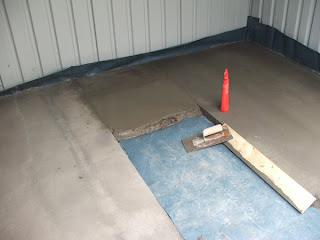Snowy days!Here we are in mid-February 2009 and I realise I haven't added anything since last year... Sounds worse than it actually is, but I need to get more regular with this blog lark.
Anyway, these images were taken during our late-November foray into deepest, darkest Nottinghamshire to collect another load of apples. We once again travelled north to the
Hempsall Heritage Orchard to see what the wind and rain had encouraged the trees to drop. After un-hitching the trailer and pushing it into the orchard, Gail unloaded the trailer while I helpfully took photographs.

Due to all the recent rain, the ground was really soft and I was worrying how we'd get the trailer off the orchard before we'd even got any fruit in it... The trees had dropped most of their leaves and the floor was littered with fruit of all colours, shapes and sizes.

We scouted round for the dessert and dual-purpose apples, and avoided all of the culinary varieties. It made it much easier to spot the best apples by looking for where the local rabbit and hare population had done most of it's nibbling! Curiously - or maybe not - the order Legomorpha do not seem to like to nibble cooking apples; unfortunately they do like to nibble and bite great chunks out of the russets. It wouldn't be so bad if they ate the whole apple, but the furry little bundles appear to browse over as many apples as possible.

Never mind, we worked on into the cold, dark and drizzle, and by late afternoon had the trailer full of fruit. By luck as much as brute force, we managed to manhandle the sinking trailer out of the orchard to a point where we could successfully hook-up the trailer onto the car. We need to adapt the trailer to take the weight it is capable of carrying, as full-to-the-brim we still have capacity to carry another 150Kg of fruit. I need to make some form of frame to raise the height of the sides.
Hot-aches set in during the drive home, but it was worth it. The next couple of days saw the apples rapidly milled and pressed until we had no more container space left. An impending Christmas trip to Spain to spend the festivities with Gail's father, meant we were pushed for time (and cash - £1=Euro1 is not fun!), so the containers would have to wait.
In early February we had a break to visit
Chesterfield Beer Festival and our friends Paul & Julia kindly put us up (or should that be put up with us?) overnight so we could explore what was on offer. I didn't fancy the cider and perry choice much, so spent the night drinking the beers on offer, including the "Winter Ales" section which had a nice Thornbridge at 7.7%ABV and a really lovely rich ale at 12.0%ABV whose name unsurprisingly escapes me... It was good to meet up with Julie and Andy from Chesterfield CAMRA, who are also planning on coming down to the
Ross-on-Wye Cider Festival with us in early September. Hopefully Karen and Mark (
Rockingham Forest) can also make it so it should be a good bash.
Here in mid-February, the new containers are sat under cover - still empty - but I also have a new cider-pump ready for action, so the next week should see the pump proving it's worth by transferring the very-slowly bubbling (and very cold) cider into the new containers. This cold weather has really put everything back but I hope we'll have something ready by the beginning of April for the
18th Mansfield Beer & Cider Festival.
What else is new? Well after 14-odd years together, eleven of which we've been engaged and nine or so we've lived together, Gail and I are finally(?) getting married. Been to the register office today to sign on the dotted line and hand over some cash, so it is all systems go for May 23rd 2009 - which also happens to be Gail's birthday. Aaah, romance is not dead!!!! I'm looking forward to it - even though the date clashes with this year's Welsh Perry and Cider Championships at The Clytha near Abergavenny. Oh well. Next year we can go as Mr & Mrs. Nice.







